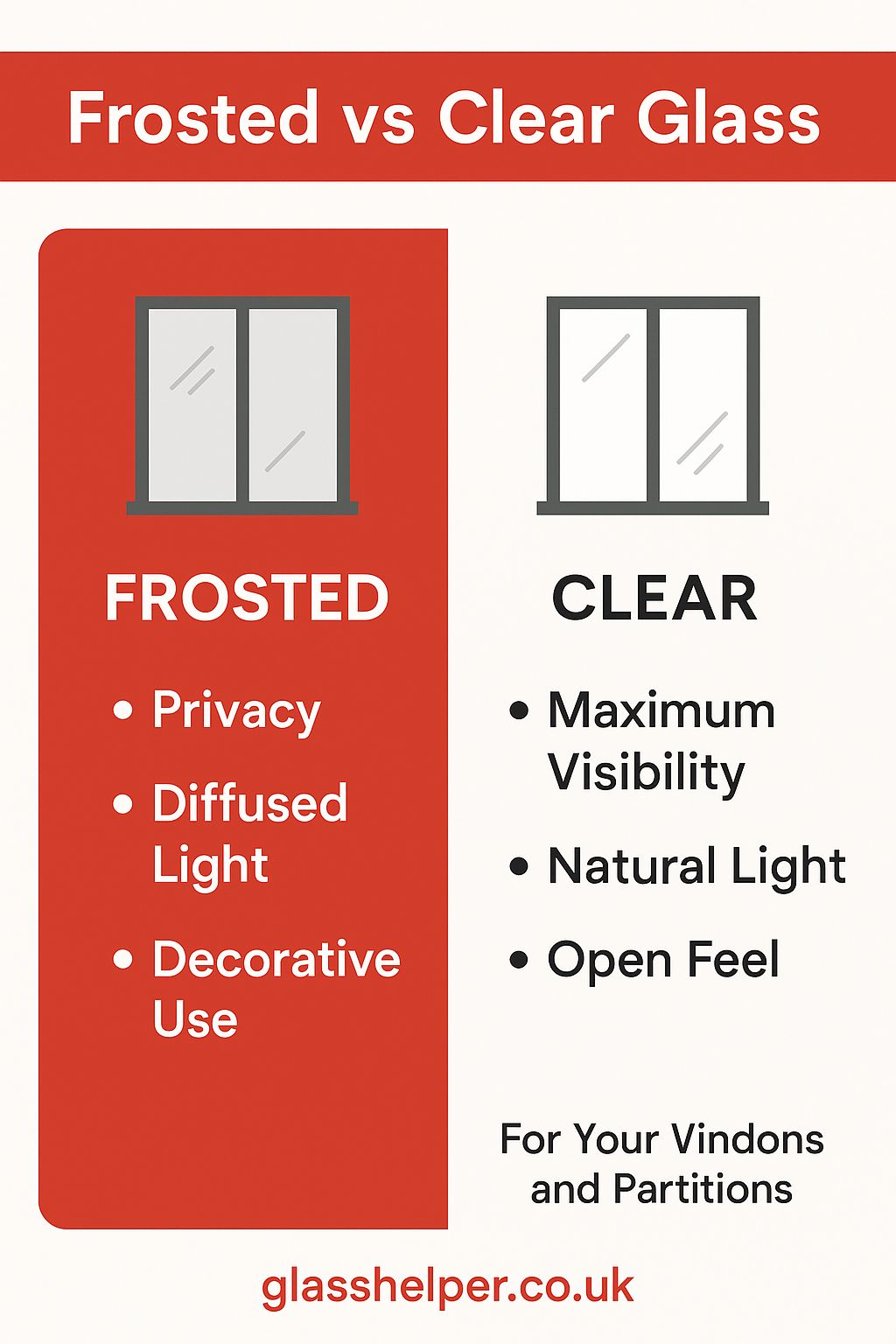Frosted vs Clear Glass Which is Right for Your Windows and Partitions featured
Glass Comparison · 2025
Read time: ~5-6 mins · Updated: 24 Sep 2025
Choosing between frosted and clear glass can make a big difference in privacy, lighting, style and cost.
Whether for windows, bathroom partitions or office dividers, understanding the pros and cons of each will help you make the right choice for your project.

What is frosted glass?
Frosted glass is created through sandblasting, acid etching, or applying a frosted film to clear glass. The process diffuses light and obscures visibility, providing privacy while keeping spaces bright.
- Delivers privacy without blocking natural light.
- Reduces glare and harsh sunlight—popular for bathrooms, shower screens and office partitions.
- Available in decorative designs (patterns, gradients, custom textures).
- Costs slightly more due to extra processing.
What is clear glass?
Clear glass is unaltered transparent glass, allowing full visibility and maximum daylight. It’s the most common type of glass for windows, doors and partitions.
- Unobstructed views and bright natural light.
- More affordable compared to frosted or decorative glass.
- Ideal for living rooms, shopfronts, and modern open-plan designs.
- Lacks privacy—usually paired with blinds or curtains.
Side-by-side comparison
Privacy & Light
- Frosted: high privacy, diffused light
- Clear: full visibility, maximum daylight
Cost & Processing
- Frosted: slightly higher due to etching/film
- Clear: lowest cost option
Common Uses
- Frosted: bathrooms, office partitions, decorative walls
- Clear: living rooms, shopfronts, facades
Which glass fits which situation best?
- Bathrooms & showers: Frosted glass ensures privacy.
- Office partitions: Frosted for discretion, or a mix of clear and frosted for balance.
- Living rooms & shopfronts: Clear glass maximizes light and visibility.
- Street-facing windows: Frosted or clear with privacy film depending on need.
- For added safety, consider tempered glass or specialty finishes like satin glass for a softer frosted look.
References & further reading:
Saint-Gobain Glass UK,
NSG Group (Nippon Sheet Glass)
Still unsure which glass is right for you?
Frequently asked questions
Is frosted glass more expensive?
Yes, because it requires additional processing like etching, sandblasting or film application. Clear glass is generally cheaper.
Does frosted glass block light?
No, it diffuses light—making it softer and reducing glare without fully blocking it.
Where is clear glass best used?
In living rooms, commercial facades, or anywhere you want maximum transparency and daylight.
What’s the difference between frosted and satin glass?
Satin glass has a smoother, silk-like finish compared to traditional frosted, giving a modern aesthetic with the same privacy benefits.
Do building codes matter for glass choice?
Yes—low-level windows, partitions in wet areas, or doors often need safety-certified glass under BS EN standards. Always check local building regulations.
